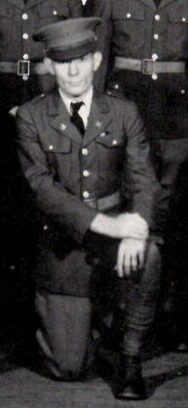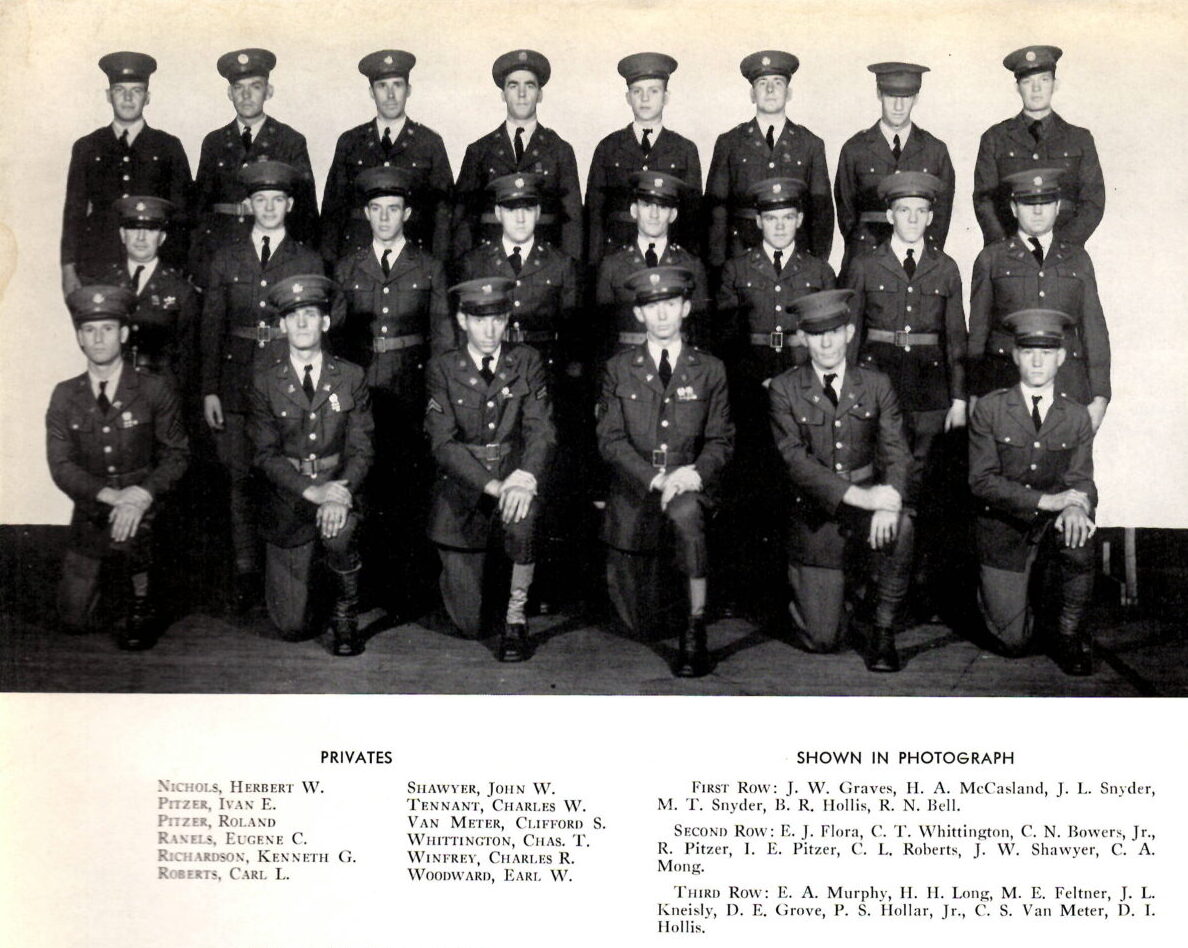Master Sergeant Boyd Reed Hollis 20545408

Master Sergeant Boyd Reed Hollis 20545408 US Army. He was born on October 1, 1913, in Martinsburg, West Virginia. He was the son of Edward Boyd Hollis Sr. and Bessie Lee Whittington Hollis. He married Anna Elizabeth Ramey Hollis on March 2, 1936, in Berkeley, West Virginia. In 1938 he was serving as a Corporal in Company D, 201st Infantry of the West Virginia National Guard. On January 6, 1941, he was federalized into the US Army from the West Virginia National Guard. At this time, he was 5 foot 9 inches tall weighed 175 pounds had Blue Eyes and Brown hair. He would go on to serve in combat in Alaska fighting the Japanese. On December 31, 1943 he was promoted to T/Sgt from S/Sgt he was serving in D Company 201st Infantry. On June 16, 1944 he entered H Company, 253rd Infantry, 63rd Infantry Division, at Camp Van Dorn. He went overseas with the 63rd Division in November 1944. He earned his 1st Bronze Star Medal on February 17,1945
Later in the day on February 17, 1945, the 4th Platoon Sergeant Robert A. Suhrbier was killed in the woods by a piece of shrapnel from an overhead artillery tree burst. The shrapnel penetrated his steel helmet at the temple, resulting in instant death. At this point Sergeant Hollis took immediate command of the platoon reorganized it and despite losses and intense enemy fire of all types drove the enemy from the surrounding woods.
He remained the Platoon Sergeant until April 7, 1945. On the evening of April 5 at 1645 hours “A” Company led the attack on a hill directly east of Untergriesheim… A Company’s attack was not the only hill that was under attack in the late afternoon of April 5. At around 1600 hours, F Company 253rd decided to attempt to take a hill southwest of its position in the direction of E Company 253rd …. This attack also resulted in the H/253 to have “All hell broke loose again with increased enemy artillery, rockets, mortars and 20mm antiaircraft fire to counter the attack.” Tech Sgt. Boyd R. Hollis was caught out of his hole and immediately, on instinct, jumped into the nearest hole. The hole was occupied by Pfc. Bill W. Clark and Pfc. Robert L. Shular two machine gunners from H Company. The space was limited as the hole was only 2 feet by 4 feet by 5 feet deep. Because the foxhole was only about 10 yards from Staff Sergeant John J. R. Kinney foxhole Sergeant Kinney called to Sergeant Hollis to come over and join Kinney, as there was plenty of room in Kinney’s foxhole since no one else was in the foxhole. According to Kinney “Frankly, I appreciated having company under these frightening circumstances. T/Sgt. Boyd R. Hollis, dashed over, jumped in, and waited out the barrage with me… Shortly, a large explosion occurred in the foxhole Hollis had just left.” A large projectile most likely a 105mm round landed directly into the foxhole and instantly killed Pfc. Bill W. Clark and severely wounded Pfc Robert L. Shular. When the incoming barrage died down, Sergeant Hollis and Sergeant Kinney went to investigate the hole that had been demolished. They found Pfc. Bill W. Clark was dead. Pfc Robert L. Shular was wounded by shrapnel in all parts of his anatomy, but particularly in his torso. Sergeant Kinney joined three other GIs to help carry the stretcher out with Pfc Robert L. Shular. When Kinney was carrying the stretcher down the hill to the battalion aid station. “The thing that moved (Kinney) the most about this event was when he noticed the near mortally wounded soldier trying to speak. (Kinney) leaned down close to Shular’s face and heard him faintly say, “I’m just glad to be alive.”-very emotional for (Kinney).
The death of PFC Clark, the mutilation of PFC Shular, and the endless barrage of artillery, rockets, mortars and antiaircraft fire from April 4 to 7 took its toll on Tech Sgt. Boyd R. Hollis. As well as the pointless loss of 21 men on April 3rd Hollis was a seasoned combat veteran first seeing combat against the Japanese in the Aleutian Islands then two campaigns in France and Germany. But his close call to death on April 5, 1945, was the point that made this seasoned combat veteran need a break. Although he should have left on April 5th, he stayed with his men for another 2 days serving as an excellent Platoon Sergeant of 4th Platoon. But on April 7, 1945, he was taken off the line as a “Non-Battle casualty due to extreme battle fatigue exhaustion; thus, giving him an opportunity for some quiet rest in a safe place.”
These 2 attacks resulted in the 63rd Division sustaining several casualties on April 5, but it did help in relieving the pressure that E Company and G Company 253rd Infantry was under.
After WWII he would reenlist in the US Army, he would remain in the US army until November 30, 1968. Serving over 30 years in uniform. He was also a Korean War Veteran, and a Vietnam War Veteran. After he retired from the US Army, he worked for the next 11 years for K Mart. He died on July 13, 1989, in El Paso, Texas, at the age of 75, and was buried there.
His military awards include Bronze Stare Medal with V and Oak leaf cluster, American Defense Medal, The American Theater of operations Medal, European African Middle Eastern Theater of operations Medal with two battle stars, the Asiatic Pacific Campaign Medal (PTO), The Good Conduct Medal, the World War Two Victory Medal, Army of Occupation Medal, Korean Service Medal, UN Korean Service Medal, the Vietnam Service Medal, the National Defense Medal with a Star, and the Combat Infantry Badge.
